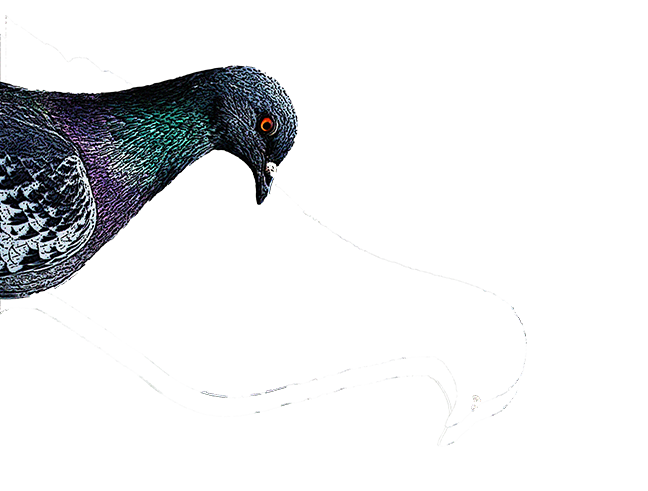
About The Creative Lives of Animals
from Chapter 5: Sexual Exuberance
I will skip all the gnarly comparisons with human sexuality I might have written about when describing the mating of leopard slugs; their coupling is so spectacularly choreographed and unique that it needs no metaphorical depiction. Leopard slugs, so called because of their leopard spots, possess male and female sexual organs. Mating begins by circling each other in a slow, sometimes two-and-a-half-hour dance. It continues as the two slugs climb into a high place, perhaps a tree, and secrete a thick “rope” of mucous approximately a meter long. Both using their mucous ropes to lower themselves, they gracefully entwine their bodies as they move down along the rope. They then turn their sexual organs—for mating they use their penises, which emerge from their heads—inside out from the back so that the organs, blue, white, and glossy, can meet and entwine, producing a beautiful flower-like structure that enables each slug to insert a sperm sac into the body of its mate. This incredibly sensual and elegant performance ends with one leopard slug crawling up the slime thread while eating it, so that the other one drops to the ground.1
The sheer ebullience of this example of animal sensuality is one of the countless instances of what biologist Bruce Bagemihl has called “biological exuberance.” Extravagantly diverse natural processes that could have been accomplished more conservatively instead result in uncounted numbers of examples of sexual variety and choice.2 The limits of the profusion of obviously pleasurable sexual activity have in no way been reached, nor have all its progeny been accounted for. While this kind of activity might be categorized as examples of evolutionary patterns, Bagemihl’s phrase points to the extraordinary variability and sheer inventiveness of a universal creativity in which both animals and humans exist. This emerging view is supported by research in which animals are seen as sophisticated decision makers creatively involved in their own sexual choices.3 Serving as a taste of this larger and more communal sense of creativity we all share as creative sexual beings, the following examples provide glimpses of how animals use their creative impulses to drive variation in sexual behavior and individual choice. Let’s begin with a pocket-sized overview of just how varied animal sexual lives may be.
p. 138, The Creative Lives of Animals
Do We Dance and Sing?
What of wooing? Singing, dancing, looking good—these attributes help the admirer to insinuate themselves into the prospective mate’s heart, and if not the heart, at least their nether parts. One of the most striking videos I watched in my quest to track down and understand examples of creative mating behavior was of American alligators singing and dancing to impress a mate. Alligators do not have a reputation for being particularly charming. I, too, had a limited knowledge of alligators when canoeing in Florida. My ex-husband, a rather fearless ex-Marine, used to slow the canoe down and let whatever alligator was following us come as close as possible. I was 25 at the time and had spent little time in swamp environments, so this terrified me. I was sure we would be eaten. We were not, luckily, but I still maintain a healthy respect for alligators and their need for space when I see them in person. The mentioned video and back story exposed an entirely different side of alligators. They possess an elegant old-world charm of which I was unaware. For the last 170 million years, alligators have been displaying both vocally and visually to entice mates. American alligators produce very low-pitched rumbling roars, called “bellows,” year-round, but most frequently during mating season. While in the water a male alligator raises his head out of the water in preparation for bellowing. He remains still for a moment and then initiates a gulping motion, visibly contracting his larynx, seeming to force air into his body. Then slowly immersing himself lower into the water, he raises his head to a 30- or 40-degree angle and arches his tail out of the water in a sultry curve. In this position, tensing his body, according to researcher Kent Vliet, he “produces an infrasonic signal so powerful that water ‘dances’ up around the alligator’s torso.”33 The male bellows immediately following these sub-audible vibrations. While females may bellow back, only male alligators produce a “water dance.” These commanding displays reliably demonstrate to other males and females how large an individual male is. Cognitive biologists at the University of Vienna, Stephan Reber and Tecumseh Fitch, found that the frequency of the bellows correlated with the actual size of the male.34 Size matters among alligators.
p. 149, The Creative Lives of Animals